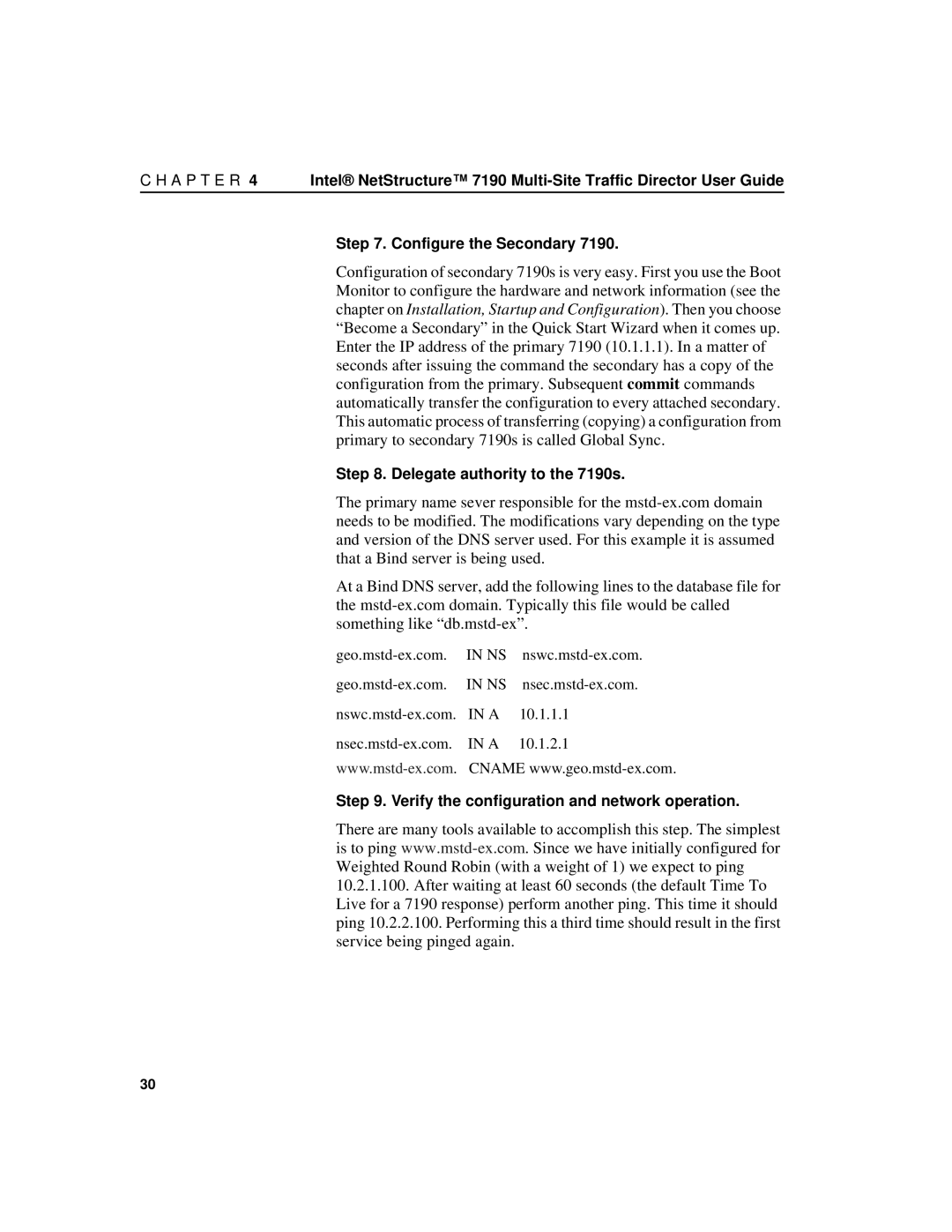C H A P T E R 4 | Intel® NetStructure™ 7190 |
Step 7. Configure the Secondary 7190.
Configuration of secondary 7190s is very easy. First you use the Boot Monitor to configure the hardware and network information (see the chapter on Installation, Startup and Configuration). Then you choose “Become a Secondary” in the Quick Start Wizard when it comes up. Enter the IP address of the primary 7190 (10.1.1.1). In a matter of seconds after issuing the command the secondary has a copy of the configuration from the primary. Subsequent commit commands automatically transfer the configuration to every attached secondary. This automatic process of transferring (copying) a configuration from primary to secondary 7190s is called Global Sync.
Step 8. Delegate authority to the 7190s.
The primary name sever responsible for the
At a Bind DNS server, add the following lines to the database file for the
IN NS | ||
IN NS | ||
IN A | 10.1.1.1 | |
IN A | 10.1.2.1 |
Step 9. Verify the configuration and network operation.
There are many tools available to accomplish this step. The simplest is to ping
30
